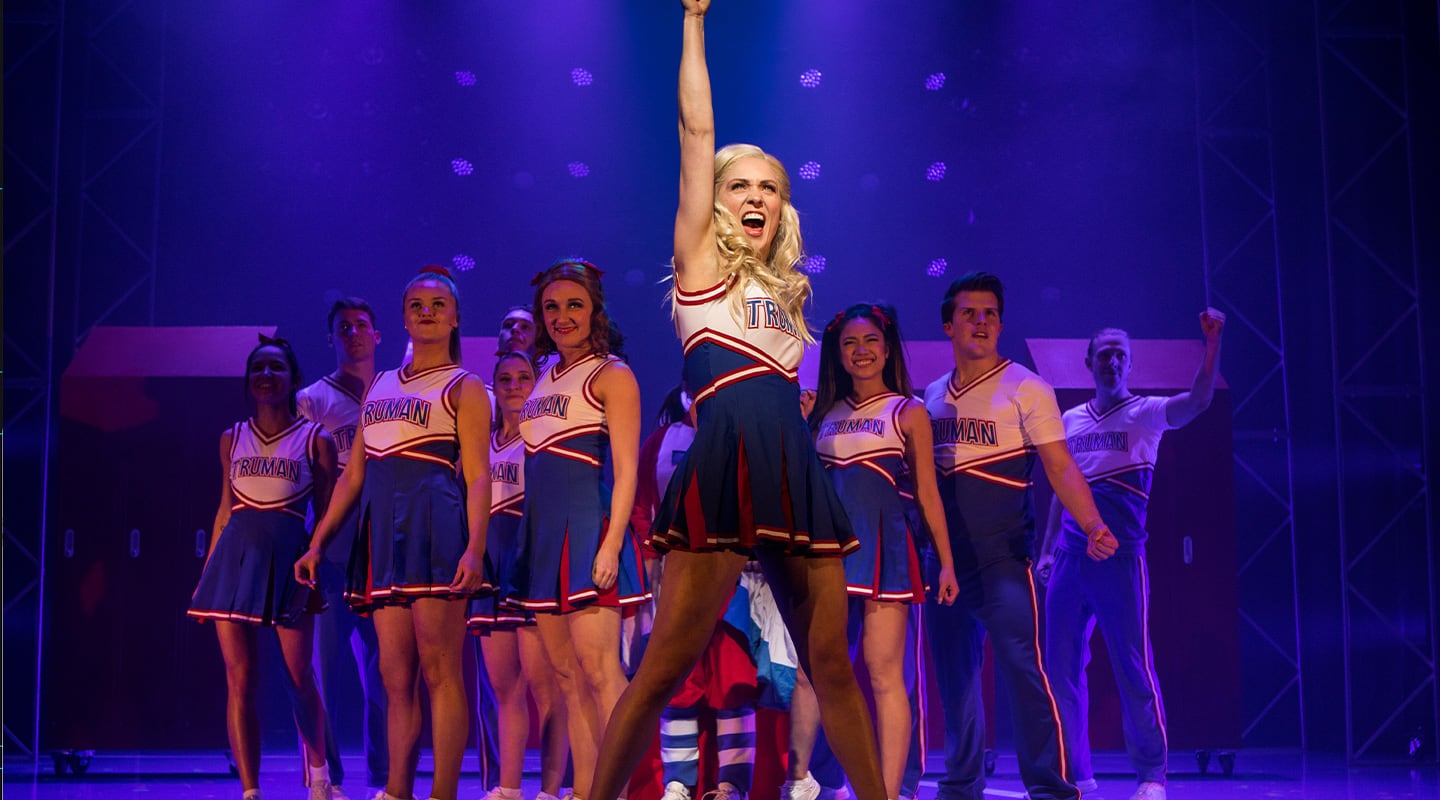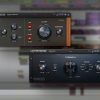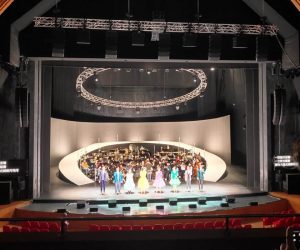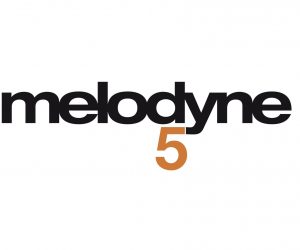
Sound for Bring It On: The Musical
Mark Woods goes backstage to see how Sennheiser came to the rescue for a show that involves dialogue, singing, dancing, gymnastics and a live band.
Theatrical productions are tough audio. Mixing bands has its own challenges, but at least the vocalists sing into the mics. I had cause to reflect on this while visiting Sydney’s State Theatre to see the non-stop whirl of songs, dance and gymnastics known as Bring It On: The Musical. Based on the loyalties and rivalries of competing cheerleaders, the show is focused on the performers and the choreography. The audio production includes 22 wireless headset channels and a live band. Sound designer Greg Ginger from Outlook Communications gave me a look around.
HIDING THE BAND
The show needs all the floor space it can get so the stage at the State Theatre was extended forward 4m, covering the orchestra pit. The six-piece band was set up downstairs and backstage in the Green Room, leaving it looking like a combination of a Green Room, a rehearsal studio and a live recording room. It took a bit of soundchecking to get levels comfortable in the room, with everyone so up close and personal. The guitar amp ended up in a road case, and I think Greg Ginger wanted to put the drum kit in one too but couldn’t find a case big enough, so he dampened the skins with some cotton wool as a compromise. The benefits of the band being hidden away and removed from the stage were studio-like separation from the stage sound, and complete control in the FOH. The band had a conductor, and followed the show via headphone monitoring and a screen.
The mix required 24 channels to cover the band, with lots of Sennheiser e614 small-diaphragm condensers to be seen. The 24 channels were sent to a Digico SD5 FOH console, mixed in with the on-stage performers’ headset mics and some manually-triggered FX from QLab, then processed through a BSS Soundweb BLU-100 and fed to the house speaker system. The performers on stage heard themselves and the band through four little Funktion-One F55 dual five-inch speakers [[08]] attached to the front lighting truss, with another four on the middle truss. Positioned about 6m above the stage — just out of reach of flying cheerleaders — they weren’t close or loud, but supplied an even spread of sound that was just enough for the performers to perform happily.
ON-STAGE PERFORMERS
The person who invents invisible wireless microphones is going to do very well, but until then it’s omni-directional headset mics and bodypack transmitters for theatrical performers. The average rock opera might get away with headset mics somewhere down the sides of the performers’ faces; it’s not an ideal place to pick up vocals in itself, but it’s a luxury compared to Bring It On where the mics are hidden away on the performers’ hairlines or in wigs.
![[[09]]](https://www.audiotechnology.com/wp-content/uploads/2020/03/09.jpg)
![[[09b]]](https://www.audiotechnology.com/wp-content/uploads/2020/03/09b.jpg)
![[[08]]](https://www.audiotechnology.com/wp-content/uploads/2020/03/08.jpg)
![[[05]]](https://www.audiotechnology.com/wp-content/uploads/2020/03/05.jpg)
The mics aren’t the only things that need to be hidden. With most of the cast in cheerleader outfits, hiding the wireless bodypack transmitters and keeping them in place as the performers jumped around could be an even bigger problem. Regular bodypacks (typically powered by a couple of AA batteries) would have been awkward under the tight costumes, and, with 22 wireless channels and a couple of spares, would have required a carton of fresh AAs for every show.
Sennheiser’s Digital 6000 system came to the rescue. Their new SK6212 bodypack transmitter, released earlier this year, is so small that it’ll change expectations for these devices. It feels strong, the replaceable antenna is thin and flexible, and I like the look and feel of the rounded corners and sides — it shouldn’t break or dig in if a performer falls over and lands on it. An additional inner seal helps to repel moisture, and Greg noted its effectiveness in this sweatier than average application.
Bring It On: The Musical is a fairly simple but boisterous and dynamic show. The audio production had to work within the constraints imposed by the physicality of the show, and relied heavily on the quality, stability and manageability of the large number of wireless channels. The singers on stage were the stars of the show and, apart from my concerns about mics in wigs and the lack of opportunity for any sort of mic technique, it worked remarkably well at showtime. The cast were experienced musical theatre performers with strong voices and good projection. The 2000-person capacity State Theatre has excellent acoustics and the PA was well-controlled in the highs and high-mids where it might feed back, so despite the inherently risky combination of a loud show, 22 omnis and a PA, there was no feedback or instability. The band sounded great, they were mixed to suit the vocals and I didn’t miss seeing them.
With most of the cast in cheerleader outfits, hiding the wireless bodypack transmitters and keeping them in place as the performers jumped around could be an even bigger problem.
![[[07]]](https://www.audiotechnology.com/wp-content/uploads/2020/03/07.jpg)
![[[03]]](https://www.audiotechnology.com/wp-content/uploads/2020/03/03.jpg)
![[[02]]](https://www.audiotechnology.com/wp-content/uploads/2020/03/02.jpg)

























RESPONSES